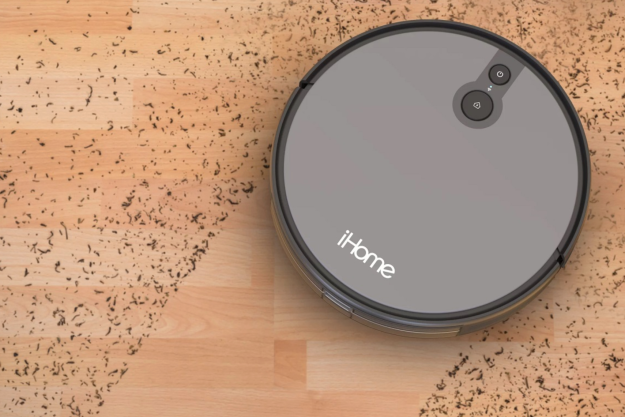
Lange thinks the Internet of Food (IoF) can help everyone make better informed choices about what they eat.
While you might be able to learn if your chicken was named Colin, University of California, Davis, food scientist and informatician Dr. Matthew Lange thinks the Internet of Food (IoF) can help everyone make better informed choices about what they eat. Ahead of his appearance at the upcoming reThink Food conference in Napa Valley, California, we asked Lange about the benefits of digitizing food.
Lange is the principal investigator at UC Davis’s IC-Foods. The organization is trying to develop standardized languages and ontologies (computable languages) around food. In order to digitize food effectively, everything from food processing plants to farms to grocery stores need to be part of the same ecosystem. The container of spinach in your fridge might say it’s organic, have the name of the distributor, and boast about being triple washed, but you still don’t know much about where it came from.
If we started tracking each leaf from farm to table, a label with a QR code might tell you something that influences what you buy. Maybe you could get a better sense of the company’s definition of free range or opt for the greens that came from the closest farm because it took less energy to get there. What if instead of a sell-by date, you could see exactly when the item was picked or packaged?

But the possibilities are bigger than that, according to Lange.
“Digitizing food enables unprecedented insights from a historical tracing (point of view), which also then enables remarkable predictive analytics about food,” he told Digital Trends.
A bit about blockchain
Blockchain is often described as a digital ledger, one that’s shared across a network. Transactions and changes are publically recorded as a “block.” That block is linked to the next transaction in the sequence, and as you go further down the line, you’ll be able to see the record of each individual transaction. Since it’s decentralized — no one owns it — it makes it easier for individuals in different companies to access shared information without having to doubt its authenticity.
“This area of research where food security meets internet security is a critical emerging field.”
It’s used for cryptocurrency transactions like Bitcoin but is also being considered for other applications such as health records. IBM, Nestlé, and Walmart are collaborating on a food blockchain. The World Health Organization estimates 420,000 people die of foodborne illnesses each year, and the three companies think blockchain technology could make it faster and easier to determine the source of contamination — in hours rather than weeks.
At each step in the supply chain, farmers, processors, distributors, and retailers would have access to the information that comes before and after them. In terms of the bigger picture, it could help pinpoint ways to reduce costs as well.
“As food languages become more standardized and blockchain technologies become more ubiquitous and/or interoperable,” Lange said, “we’ll begin to see a drop in the price for transactions to occur. We think that the combination of standardized terminologies, together with blockchain and robotics, allows businesses to compete and to be more traceable, transparent, and ultimately trustworthy.”
The language of legumes
Global Open Data for Agriculture and Nutrition (GODAN) brings together governmental and non-governmental organizations so they can share the wealth of data accumulated from Internet of Things and other technologies. Partners can use the information in countless ways, like developing an atlas based on local weather, soil, and crop systems. Scaling up can provide crop-yield estimates and identify new growing areas, which will become increasingly important for water-scarce regions.

“At the same time, we have very innovative companies who, through web scraping, AI, and even manual methods are creating or supporting the creation of languages that can drive their business models, whether it’s BeerXML for sharing beer recipes, or specific ways to represent recipes, meals food composition data, or food production growing conditions,” Lange said.
Part of IC-Foods’ mission, he said, is to create a standardized language that both industry and government will use. U.K.-based Whisk wants to create a food genome akin to Pandora, helping match users with meals they like. Innit wants to digitize food, not only by tracking food on its journey to your door, but helping you choose what to make once it’s in your fridge and bringing in smart appliances to make you a better cook, too.
When it comes to languages, consumers might increase their food vocabulary as well.
“What we haven’t seen yet is the food equivalent of the web browser”
“What we haven’t seen yet is the food equivalent of the web browser,” Lange said. “Every web browser understands HTML, and while most web surfers don’t know HTML, most do know what a font is.” Eventually, the nitty-gritty details will hide behind an interface, so people won’t necessarily have to see the code behind the crops.
“I do think that users will learn more about food though,” Lange said. “In the same way that users are familiar with fonts, jpegs, and a variety of digital materials.”
All about me
From Habit to DNAFit to Fitness Genes, there are lots of companies ready to supply tailored nutrition and fitness information based on your DNA. Results may vary, but Lange sees the IoF as having a role to play as the science progresses.
“On the personalization side, genetic testing is just one example of why we need IoF vocabularies to map across scientific domains,” he said. “More and more is being discovered every day about genetic interactions with nutrients, tastants (molecules responsible for taste experience), and odorants (molecules responsible for aroma/smell experience), and how these influence our experiences with food.”
Activity monitors will have their place in the IoF as well, he said, so one day your smart kitchen could recommend meals based on how hard you exercised that day.
If this all makes you a bit uncomfortable, Lange does admit there are potential downsides to the IoF.
“Another aspect of this is that we don’t fully understand the food-security implications of impregnating our food supply with internet devices like sensors, cameras, and robotics,” he said. “We witnessed several botnet attacks as the IoT was emerging, and security was a secondary concern. We know we don’t want botnet attacks on our food supply, so this area of research where food security meets internet security is a critical emerging field.”
Ultimately, though, Lange thinks the benefits will outweigh these risks, and it sounds like the future of food is connected whether we like it or not.


